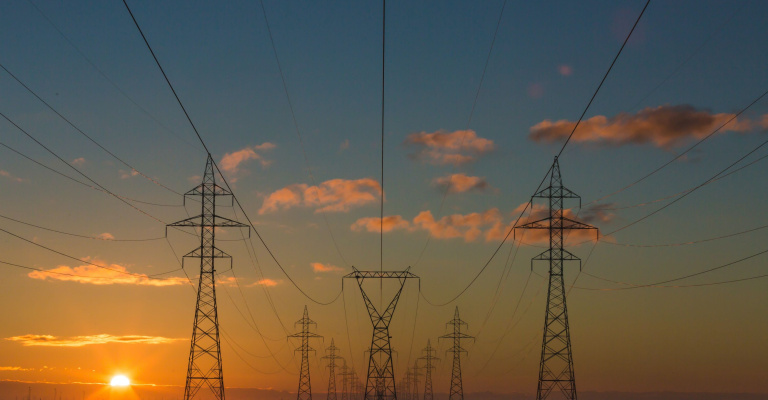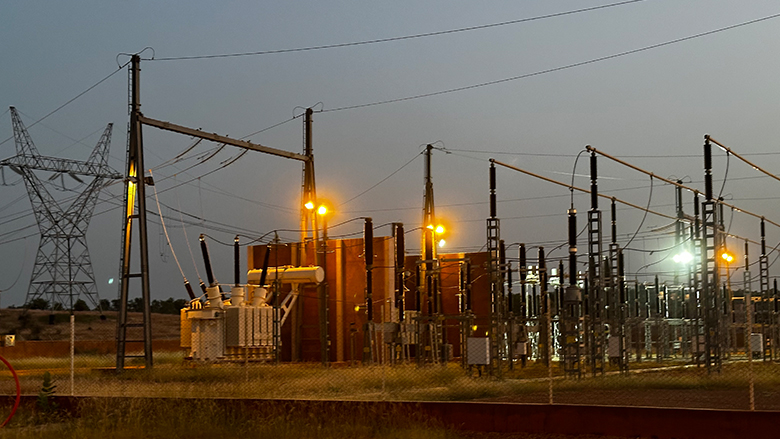Expanding Electricity Access in Sub-Saharan Africa

Joe, a Nigerian who oversees a 400-hectare rice farm in the country’s north, and I recently had dinner together. The U.S. Department of Agriculture estimates that Nigeria imports over 2.4 million metric tons of rice each year. Joe and other farmers are contributing to the 237 million-person nation’s transition to rice self-sufficiency.
However, Joe the farmer has a disability. He claims, “The power grid is a fiction to me.” “I have never had or will ever have electricity from the grid.”
Joe put in solar panels five years ago to run the irrigation system on his property, which uses water from a nearby river. Meanwhile, he continues to use diesel generators to power his milling and bagging machines. Joe’s fuel expenses skyrocketed once Nigeria’s petroleum subsidy ended in 2023, which left him with less money to invest in additional land and other upgrades.

What is holding back Africa’s electrification?
Joe is not alone in his situation. 600 million people, or around 53% of the population, in sub-Saharan Africa still lack access to electricity. Because “access” can sometimes mean just enough wattage to light a few LED lightbulbs, even this sobering statistic understates the issue. It is not what North Americans or Western Europeans would think of as electricity.
Additionally, sub-Saharan Africa’s traditional electricity grids suffer from frequent outages and low reliability. Theft of service is common because many customers cannot afford to pay for energy, even when it is given. According to a 2023 assessment by the United Nations Conference on Trade and Development (UNCTAD), grids that do exist are “outdated, unstable, and lack customer connections.”
“If that access doesn’t translate into the potential for significant improvements and increases in consumption, I’m a little tired of imprecise measures of access,” says Christopher D. Gore, a professor of politics and public administration at Toronto Metropolitan University who researches the region’s electricity usage. “Our most recent study demonstrates that [sub-Saharan] households are content with any electric light but are still unhappy with the limited supply, cost, and quality of both solar and grid power.”
It’s possible that the electrical shortage is getting worse. Researchers from the Center for Strategic & International Studies in Washington, D.C., came to the conclusion that “demand is significantly outstripping supply, and the energy crisis is deepening” in its 2024 study on universal energy access in Africa.
The World Bank and the African Development Bank last year announced Mission 300, a project aimed at providing electricity to 300 million people in sub-Saharan Africa by 2030, which is roughly half of the current number without access. An average of 4.2 million more individuals will have access to electricity each month as a result of this quick development.
Although conceivable, the expansion is hampered, chiefly by the sub-Saharan region’s net monthly population growth of roughly 2.5 million. An extra 180 million people will need access to power if that population growth persists over the program’s six years.
“It’s a big challenge. According to Barry MacColl, a senior regional manager at the Electric Power Research Institute (EPRI), who covers Africa from Johannesburg, the continent’s population is expected to quadruple by 2050. “The majority of the unelectrified population lives in rural and isolated areas, where expanding national grids can be costly and slow.” Eskom Holdings, the major utility in South Africa, predicts that in order to rebuild and expand its aging power grid and stop future blackouts, it will need to invest 390 billion rand (US $22 billion) over the next ten years.
Within and between African nations, there are still significant disparities in access to electricity. About half of the people in East, West, and Southern Africa have access to electricity, compared to just 30% in Central Africa, where nearly 100 million people lack electricity, according to a 2020 report from Germany’s Federal Ministry for Economic Cooperation and Development. Additionally, according to the World Bank, just 33% of people in rural areas have access to electricity in 2023, compared to 82% of people in metropolitan areas. (North African nations, with the exception of Libya, are completely electrified and do not belong to the sub-Saharan region.)
Off-grid solar’s untapped potential in Africa
Fossil fuels continue to be a major source of electricity in Africa. Coal is important only in South Africa, while natural gas is the single biggest source of electricity generation. According to BloombergNEF, they collectively produce almost two-thirds of the continent’s electricity. Renewable energy sources are becoming more popular, even if new gas-fired facilities are still being constructed.
According to MacColl of EPRI, “the hydro space is a huge growth area target.” Africa only utilizes a small portion of its hydroelectric capacity, much like solar. According to MacColl, small, isolated settlements with between 50 and 500 households benefit greatly from mini hydropower dams with capacities ranging from 100 kW to 1 megawatt. Large dams are being built or have just been finished in Zambia, Ethiopia, Nigeria, and Angola.
However, building hydroelectric dams is expensive and comes with the risk of corruption and poor project management, in addition to the expense of integrating a new power source into the electrical system. For example, the $5.8 billion, 3,050-MW Mambilla dam in Nigeria, which would be the nation’s greatest electricity source, has been planned for more than 40 years and isn’t anticipated to be completed before 2030. Estimates of the amount of electricity that hydroelectric dams in the region can generate are also being challenged by the effects of climate change on temperature and rainfall.
Could nuclear power help electrify Africa?
One potential solution to Africa’s electricity shortage is nuclear power. In its 2025 Outlook Report, the Johannesburg-based industry association African Energy Chamber states that “a significant number of countries in Africa are considering embarking on nuclear power programs.”
The only country with nuclear electricity today is South Africa. However, with support from the United States, Japan, and China, Ghana, which operates a research reactor, is preparing its first nuclear power facility. Both Kenya and Uganda have selected a location for their initial reactors. Additionally, the Nigerian Nuclear Regulatory Authority reports that it has technical nuclear power agreements with South Korea, France, India, and Russia. However, according to the World Nuclear Association, producing electricity using nuclear power is at least ten years away in each of these scenarios.
Kenya’s electrification success story
In the end, a number of factors will contribute to greater access to power in sub-Saharan Africa. Kenya is one example of a successful project where increased grid access is being complemented by off-grid electricity, mostly from solar. According to the African Development Bank, which provided funding for the project, the government’s Last Mile Connectivity Project intends to expand the grid to a further 280,000 homes, 30,000 companies, health facilities, and educational institutions across all 47 counties. In the past, Kenya Power, the national company, was able to raise the number of families in the poorest metropolitan areas that were linked to the grid from 3,000 to 150,000. Additionally, Kenya is home to the Lake Turkana Wind Power Project, Africa’s largest wind farm. The 365 turbines of the 310-MW plant provide around 15% of Kenya’s installed electrical capacity.
Between 2013 and 2023, Kenya’s electrification availability rate increased to 79 percent due to their persistent efforts. By 2030, universal access to power is the new goal set by Kenya Power.
The situation regarding access to power is more uncertain in Nigeria, the most populated nation in sub-Saharan Africa. In order to grow his mill, Joe, a rice farmer from Nigeria, is thinking about adding more solar panels to his property. He claims that “we can grow more rice, and mill and bag more for our people” if there were more electricity available. At least he has the ability to produce his own electricity to meet his own demands in the event that the power grid refuses to—or is unable to—arrive.
READ MORE: LAD REPORTING
